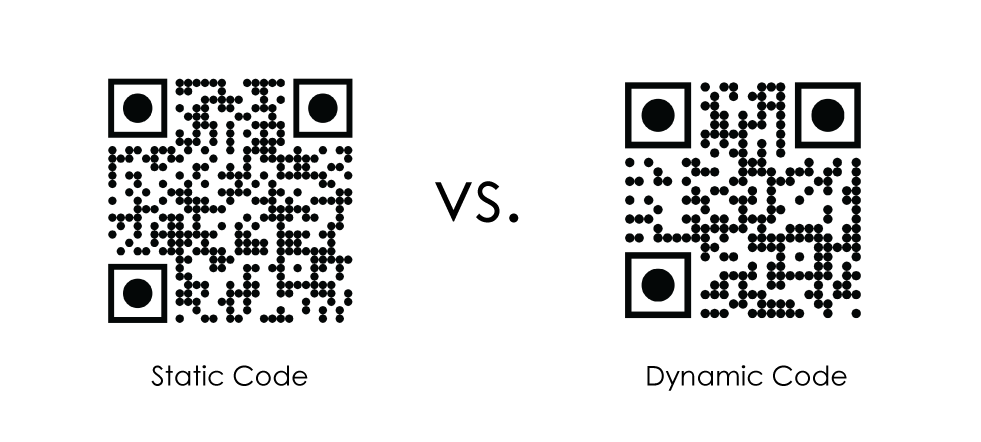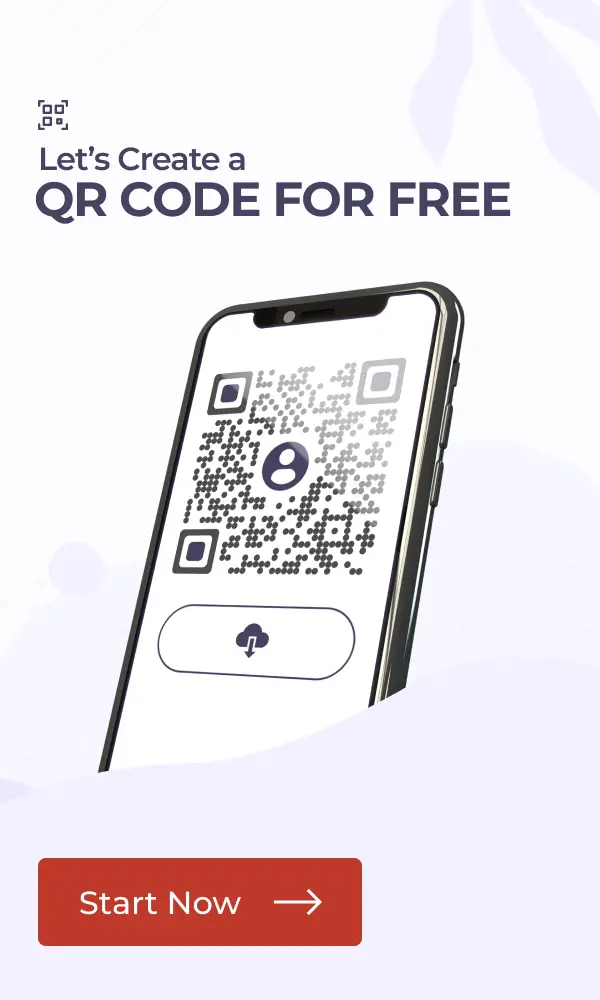In a nutshell: Static QR Codes are permanent. They’re free, simple, and fine for info that never changes (IDs, short permanent URLs, Wi-Fi, text). Dynamic QR Codes point to a short link you control. You can update destinations anytime and track scans by time, device, and location. If you’ll print at scale or the content may change (menus, offers, events, packaging), dynamic is the safer, cheaper choice long-term. Scanova lets you brand QR Codes (logo, colors, frames), edit links anytime, and see analytics that help you improve fast. Plus it offers a completely free tool for static QR Codes that you can explore.
If you’ve ever made a QR Code online, you’ve probably seen these two options: Static or Dynamic. At first glance, they look identical. Both scan fine. Both can take people to your link or information.
But here’s the thing: what happens after you deploy them is where the difference shows up.
This is why marketers, businesses, and even individuals need to know the difference. Choosing the wrong type can mean wasted prints, lost customers, and zero flexibility.
So when we’re talking about static vs dynamic QR Codes, it comes down to two things: editability and analytics. A static QR Code hard-codes the content into the data patterns. Which simply means that you can’t change it after you create it, and you can’t track results. A dynamic QR Code points to a short link you control, so you can update the destination anytime and see scans in real time.
That flexibility makes dynamic the smarter choice for teams that move fast and care about data. According to Scanova’s internal data, 98% of all QR Codes created today are dynamic.
If you’re someone who runs limited-time offers and compares performance across channels, Dynamic QR Codes give you control that static codes don’t.
Let’s break it down in plain language.
Here, you can learn about both static and dynamic QR Codes.
A. Static QR Codes: What they are, how they work, when to use them
1. What is a static QR Code?
A static QR Code stores your final data right inside the QR Code pattern. That could be a full website URL, text, a phone number, or an email.
When someone scans it, their smartphone decodes that exact data and acts on it, i.e., opens the link, shows the text, starts a call, etc.
There’s no redirection happening and no server in the middle. Once you create it, the data is permanent. If the information changes later, you’ll need to make and distribute a new code.
2. How do static QR Codes work?
The black-and-white pattern physically encodes your data. The camera reads that pattern and pulls the data straight out.
Because there’s no redirect, static codes can work offline for things like text, phone, or SMS actions. (However, the encoded links still need the internet to open.)
3. Pros and cons of static QR Codes
Pros
i. Simple and fast to make. Any basic generator can create a static QR Code in seconds.
ii. No dependency on a service. The data is embedded right into the code, so the code works as long as the content it stores remains relevant and valid.
iii. Offline for certain data. Cases like sharing a text, phone number, and SMS payloads can be used without the internet.
iv. No ongoing fees. Static codes are typically free to generate and scan forever.
It’s important to note that some not-so-free tools put scan limits and ads/watermarks on static QR Codes to make you pay, but the truly free ones, like Scanova, give you unlimited scans on your static QR Codes.
v. Privacy-friendly. Because there’s no redirection involved, you’re not collecting scan analytics by default.
Cons
i. Not editable. If the URL changes or there’s a mistake, the old code is done. You will need to reprint new QRs, and reprints cost time and money.
ii. No analytics. You can’t see how many scans you got, where, or on which devices. You’re pretty much clueless about the engagement your QR Code is pulling.
iii. Denser patterns with long data. Long URLs create busy codes that can be harder to scan at small sizes or from a distance. Also, densely packed QR Codes look unappealing which can cause a drop in scan rate.
iv. Risk of stale experiences. If content moves or expires, users hit dead ends. That looks unprofessional, and it can cost you potential clients or customers
v. Branding can be constrained by data length. You can still add colors and a logo, but the denser the code (long data), the less room you have for safe logo sizing and design tweaks.
4. Smart use cases for static QR Codes
i. Permanent information. Static QR Codes work best for encoding data that won’t change, like asset/serial numbers, equipment IDs, or fixed instructions.
But, here as well, it is important to keep the payload short (ID or short URL) so the code stays clean and easy to scan.
ii. Simple contact sharing. Great for business cards or signage where your details are stable. You can encode a vCard/MeCard or a short, permanent profile URL into the static code.
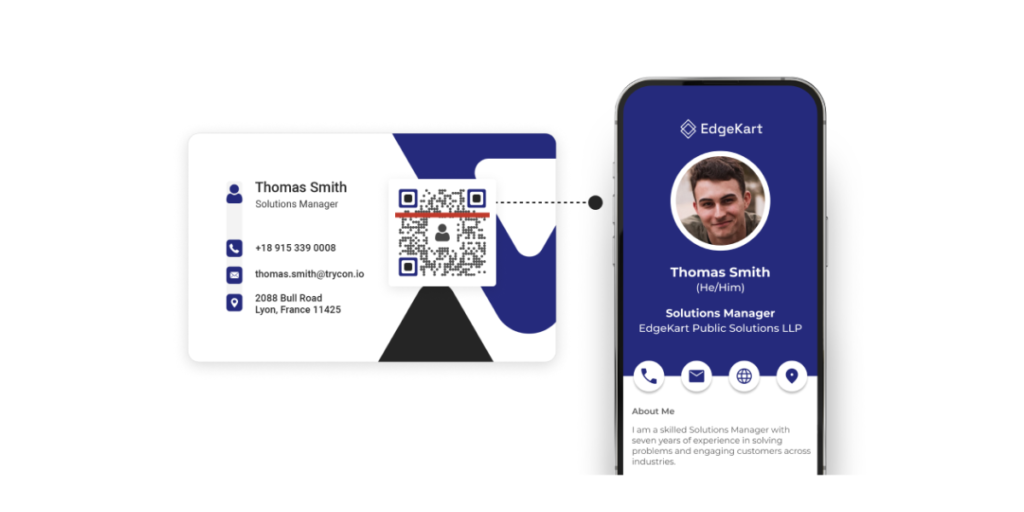
Also, adding a small CTA like “Scan to save my contact” can make it more engaging to the onlookers, and make sure you test it on iOS and Android devices before printing.
iii. Personal or one-time uses. Ideal for workshop handouts, classroom posters, or portfolios that won’t be updated often.
Host files at a stable link and label the code with context (“Scan for slides”). If you want basic tracking, you can use a short URL with UTMs while generating the code.
iv. Low-risk placements. Perfect for flyers or noticeboards where you can reprint easily and don’t need analytics. Add a short URL beneath the code for people who prefer typing.
Rule of thumb: if the information might change or you care about measuring performance, you probably don’t want a static code—use dynamic.
5. Best practices (so your static codes scan on the first try)
- Keep data short. Use a short, stable URL. Shorter data = cleaner pattern = easier scans.
- Size for distance. The farther the scan, the bigger the code. Start at ~2.5 cm (1 in) square for arm’s length; go larger for posters.
- Max contrast, clear quiet zone. Dark code on a light background with white space around it. Avoid glossy distortions.
- Use vector files for print. Export SVG/PDF for crisp edges at any size.
- Test on multiple phones. iOS and Android, native camera and popular scanner apps.
- Make it obvious. Add a short CTA near the code: “Scan to view instructions” or “Scan to call support.”
6. Quick steps to create a static QR Code
- Decide your final data (ideally a short, permanent URL or simple text/phone action).
- Go to a reputable tool like Scanova’s free QR Code generator.
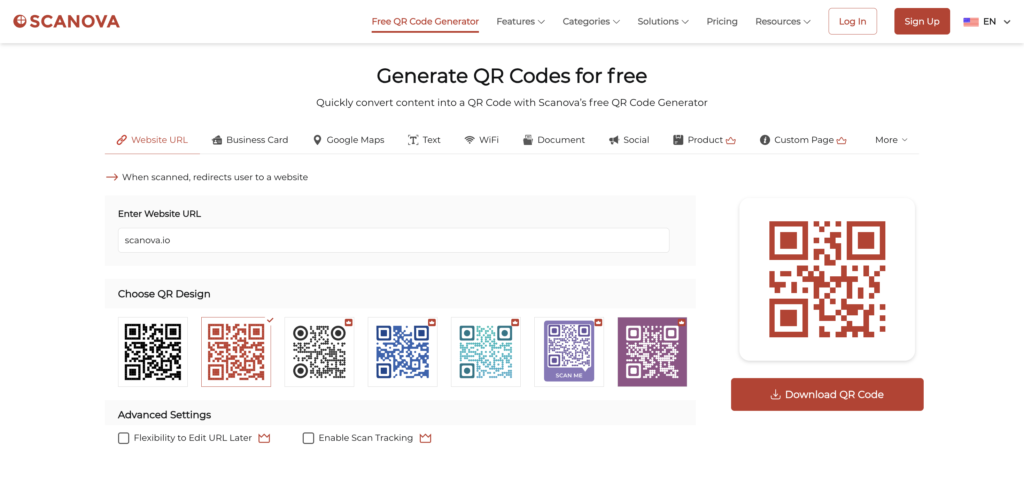
- Choose the type of static QR Code you want to create. This depends on the data you want to encode in your QR.
- Now, as soon as you input the data into the QR Code, a preview of the QR Code will appear.
- You can change the color of your static QR Code to better suit your branding or design.
- Test on multiple devices before deploying your QR Code.
7. When is static code the wrong choice?
- The destination might change (think seasonal campaigns, menus, event links, time-bound offers)
- You need scan analytics, A/B testing, or geo-targeted experiences
- You’re printing at scale where reprints would be expensive
- You want post-scan workflows (lead capture, retargeting, scheduled redirects)
In these cases, a dynamic QR Code is safer and more cost-effective because you can update the destination and track performance without touching the printed code.
Did you know that, as per a 2022 survey, nearly 83% of general retailers in the U.S. and U.K. feel the need to offer QR Codes to prevent their customers from switching to other merchants.
B. Dynamic QR Codes: What they are, how they work, when to use them

1. What is a dynamic QR Code?
A dynamic QR Code encodes a short, managed URL instead of hard-coding your final destination.
When someone scans the code, they hit that managed link first, and your QR platform redirects them to the destination you’ve set in the dashboard.
You can change that destination at any time without reprinting the code, and you can view scan analytics to see how your placements are performing right through the dashboard.
2. How it works in practice
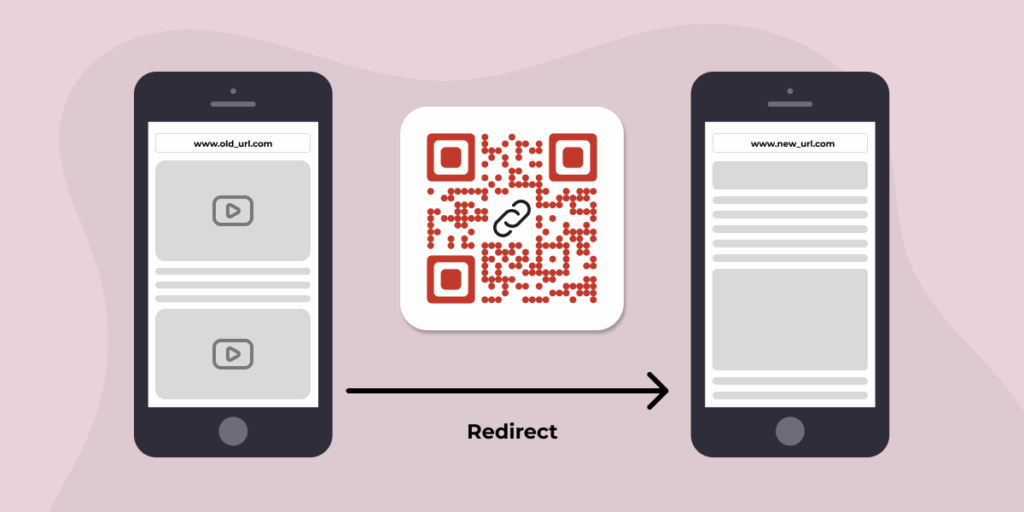
The code contains a short link you control. You set the real destination in a dashboard and can update it whenever campaigns, files, or priorities change.
Because the encoded data is short, the printed pattern is cleaner and usually scans more reliably.
These QR Codes are quite useful on small labels, curved packaging, or in cases where scanning takes place from a distance, such as OOH placements.
3. Pros and cons
Pros
i. Editable anytime: With a dynamic QR Code, it’s straightforward to fix typos, update or change links, or swap offers after printing.
This is valuable for marketers and operations teams running time-bound campaigns, seasonal menus, or price updates.
You keep your prints in market and just update the destination in the dashboard, which saves reprint costs and avoids customer dead ends.
ii. Built-in analytics: Dynamic codes record scan analytics like the timestamp when the scan happened, device/OS used for scanning, and location (city/country; optional GPS where appropriate).
Performance and growth teams use this to compare placements, measure engagement from new creatives, and decide where to spend next. It also helps retail ops see store-level engagement and train staff accordingly.
iii. Cleaner, easier-to-scan patterns: Because dynamic codes only encode a short URL, the matrix is less dense and scans faster.
This helps packaging engineers, designers, and print vendors who need small footprints or high reliability on challenging surfaces (like matte/glossy surfaces, curved bottles, textiles).
iv. Campaign control and routing: You can add UTM parameters, set time-based or geo-based redirects, and even split traffic for A/B tests.
Growth marketers use this to send morning vs evening offers, route by city or language, and prove which creative drives the best conversion, all without ever needing to touch the printed assets.
v. Advanced options when you need them: Features like password protection, expiring QR Codes, file hosting, lead capture, and API access let you build controlled experiences.
Compliance teams can restrict access to regulated content; sales ops can capture leads at events; product teams can rotate files (manuals, firmware notes) without changing the code.
vi. Branding flexibility with guardrails: You can add logos, brand colors, and frames while keeping strong contrast and scannability.
It’s basically a win-win situation because brand teams get on-brand assets; field teams get codes that still scan fast.
Cons
i. You rely on a platform: Dynamic codes need an online service to manage redirections. To reduce risk, choose a provider like Scanova that offers uptime SLAs, custom domains, exportable data, and reliable 24×7 support.
ii. There’s a subscription cost: You’re paying for hosting, analytics, and features. For marketing, this usually pays back by preventing reprints and improving ROI.
If your use case is small, fixed, and offline, a static code may be more practical.
iii. You need governance: Since QR Code destinations can be changed after printing, you need rules to control who can make changes.
Although you get full access control and team collaboration options with dynamic QR Code plans, it is always best to set up permissions so only certain people can edit codes.
Moreover, teams should require approval before changes go live, to keep a record of what was changed and when.
This prevents someone from accidentally (or intentionally) redirecting your codes to the wrong place.
iv. Mind privacy and compliance: If you collect location or device data, disclose it and store the minimum needed.
Work with legal on consent language for public campaigns, and sign DPAs where required. Treat scan data like other analytics.

4. High-value use cases for dynamic QR Codes

i. Reviews at checkout
Send shoppers to the correct Google Business Profile or review site with a simple scan.
Multi-location brands can route by store and A/B test incentives (e.g., “5% off your next visit”). They can also track scans by store or counter to see which teams drive the most reviews and where to coach.
ii. Menus, price lists, and catalogs
Keep a single printed code on tables or signage and update the linked PDF/page as items change.
F&B operators and retailers avoid reprints and ensure guests always see current prices. Watch scans by daypart to plan labor and promotions.
iii. Packaging and post-purchase help
Link to tutorials, warranty registration, or care guides. Product and CX teams can rotate content by batch, language, or region.
Track scans by SKU (Stock Keeping Unit, i.e., a unique identifier for each product) to learn which items prompt help-seeking and where to improve instructions.
iv. OOH, print ads, and inserts
Give each placement its own code with UTMs. Growth and media teams can compare billboards, magazines, or direct-mail segments.
Use time-based redirects for “early bird” offers and switch creative mid-flight without reprinting.
v. Events and pop-ups
By using time-based conditional redirection, you can link QRs to registrations before the event.
During events, the same QRs can point to schedules or maps. After the event, you can switch to highlights, slides, or a survey.
Using dynamic codes, event ops can measure which zones or sessions drive the most engagement in real time and follow up accordingly.
vi. Customer support and self-service
Route scanners to troubleshooting flows, chat, or WhatsApp. Support leaders can reduce call volume and see which issues show up most by product line.
vii. Education and training
Attach codes to lab equipment, classrooms, or internal SOPs. L&D teams keep content current without replacing signage and can track which resources get used.
5. Best practices that actually move metrics
i. Start with a clear goal: Define what success looks like, more reviews, more email signups, more orders, or lower support calls.
Share that goal with design and print teams so that creatives and placement support the outcome.
ii. Use UTMs consistently: Tag every destination with source/medium/campaign and, for print/OOH, the exact placement.
This lets analysts reconcile QR scans with web analytics and revenue and helps them make better decisions.
iii. Create one code per placement or store: Granularity enables honest comparisons. If a billboard underperforms, you’ll know it’s the placement, not the concept.
iv. Plan smart redirects: Use time windows for “pre/during/post” event states, and geo-routing for language or market-specific pages. Always set a safe fallback.
v. Own a custom short domain: A branded short link builds trust and improves scan-through rates, especially in regulated categories. It also protects against domain reputation issues.
vi. Design for reliable scanning: Keep high contrast, preserve the quiet zone, and avoid clutter or heavy background textures. Test small sizes on the actual material (e.g., glossy label, corrugated box).
vii. Put governance in writing: Use roles (viewer/editor/admin), require notes on destination changes, and enable activity logs. This protects campaigns during handoffs and holidays.
viii. Test like you mean it: Scan on iOS and Android, native camera and common scanner apps, under different lighting and distances. Break the link on purpose to confirm your fallback works.
ix. Respect privacy: If you enable GPS or enrich data, disclose it and get appropriate consent. Store only what you need to make decisions.
6. Step-by-step: How to create a dynamic QR Code that’s campaign-ready
You will need a QR Code generator that allows you to create a QR Code for your use case. You can go to any preferred search engine and look for a relevant service.
It will give you many options from which you can choose. But going through all the search results to find the best one is a long and tedious process.
For your convenience, here is a detailed comparison of the best QR Code generator available online. This guide will help you make the right decision easily.
Note: Choose a platform like Scanova that supports custom domains, analytics, access control, and vector exports. Next –
1. Go to Scanova.
2. On the page that loads, choose what type of QR Code you want. Choosing the type of QR Code would depend on what you would like your QR Code to link to.
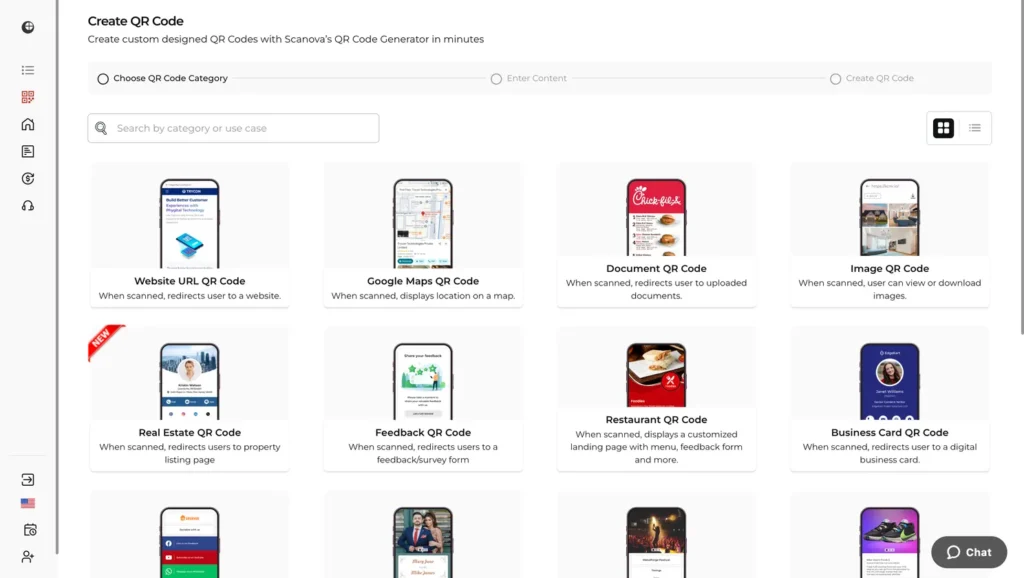
Do you want it to be a URL, image, video, or maybe an interactive video? Scanova leaves it up to you to choose your preferred category by offering you many options.
3. Fill in your details. For example, if it were a Website URL QR Code, you paste your website and then click “Continue.”
Add UTM parameters so performance flows into your analytics. Use a naming convention that you can read a year from now.
4. Then, on the next page, give your QR Code a name you can remember and then click “Create QR Code.”
5. You get a preview of your QR Code. Now, you can edit it by choosing the “Edit Design“ option or simply download it here.
Brand the QR with your logo, brand colors, and a clear frame/CTA (e.g., “Scan to leave a review”). Maintain high contrast.
6. Next, export in vector (SVG/PDF) for print and PNG for digital mocks. Test on devices and on the actual material or surface you’ll use. Confirm scanning at the intended distance.
7. Publish and place the code where the action naturally happens (checkout counter, packaging unboxing area, poster eye-line).
What to do post-publishing? Monitor analytics and compare placements. Improve the destination (speed, copy, CTA) as you learn. Update links as needed, switch offers post-campaign, rotate content by time or region, or send scanners to new launches without reprinting.
Did you know that the number of smartphone users worldwide in 2025 is approximately 5.28 billion, representing about 64% of the global population, and G2 reports that 59% of smartphone users scan QR codes every day.
7. When dynamic is not the right choice (and why)
- The data is truly permanent and will never change (asset IDs, serials, fixed instructions). Static avoids platform reliance and cost.
- You don’t need analytics and won’t act on the data. Paying for features you won’t use adds no value.
- The experience must work fully offline, and the payload is text, phone, or SMS. A static code is simpler and more robust.
- Budget is minimal, and reprints are easy. If you can replace prints on the fly and don’t need measurement, static keeps it lean.
C. Summing up: Key differences between dynamic and static QR Codes
| Parameters | Dynamic QR Codes | Static QR Codes |
| Can you edit the content or URL? | Editable: You can change the content and the URL without changing the QR Code. | Not editable: The QR Codes you create are fixed and can’t be edited. |
| Can you track your QR Codes? | Trackable: You can track the QR Codes and get multiple data points, including scan counts, locations, and device types. | Not trackable: You can’t track the QR Codes or get scan analytics. |
| How cost-effective are they? | Cost–effective: You can update the same QR Code without creating another one or printing from scratch. This saves manual efforts and printing costs. | Not cost–effective: Any change requires you to create and print new QR Codes. This increases time, effort, and printing costs. |
| How is the scan experience for customers? | Better user experience: Prospects will always see the latest information, enhancing their experience. | Standard user experience: Prospects will see fixed information, unless informed about the changes and presented with a new QR Code. |
| What are the various use cases? | Diverse use cases: You can use them for campaigns that are bigger and more complex, need personalization, and require tracking analytics. | Limited use cases: You can use them for smaller or one-time campaigns that don’t require much editing or tracking. |
D. FAQs: Static vs Dynamic QR Codes

1. How to create dynamic QR Codes for free?
You can create a dynamic QR Code for free in four simple steps:
First, sign up for a free trial of a dynamic QR Code generator (for example, Scanova). Next, select the QR Code type (URL, PDF, app, etc.), then customize your QR Code as per your preference (for example, add a logo). Lastly, download your free dynamic QR Code and start using it
2. What types of static and dynamic QR Codes can I create?
Scanova QR Code Generator offers nine QR Code types to meet diverse needs: URL, PDF, Multi-URL, Contact, Plain Text, App Store, SMS, Email, Phone, etc
Among these, many QR Codes, such as Custom Page, Product QR Code, and Restaurant QR Code types, are available only as dynamic QR Codes. Many of these QR Codes can be either static or dynamic. For instance, a URL QR Code can be either a static QR Code or a dynamic QR Code, depending on your requirements.
3. What is a custom QR Code, and is it dynamic or static in nature?
A custom QR Code is a customized QR Code designed with elements such as colors, logos, and branding to match a specific look or theme. Custom QR Codes can be either dynamic or static.
4. Do I need a dynamic QR Code?
This depends completely on your use case. If you need to create larger campaigns and need more control over them (like make them branded or track them), you’ll need to choose a dynamic QR Code.
5. Can I convert a static QR Code to a dynamic QR Code?
You can’t change a static QR Code into a dynamic QR Code. This is because the data is already encoded in a static QR Code, making it permanent. However, you can create a dynamic QR Code from scratch and edit it, if required
6. How can businesses benefit from static and dynamic QR Codes?
Static and dynamic QR Codes both have their unique use cases. While static QR Codes can be used for business cards and product packaging, dynamic QR Codes can be used for marketing campaigns and inventory management.
7. How much do static or dynamic QR Codes cost?
Static is usually free. Dynamic needs a backend and short‑link infrastructure, so it’s subscription‑based. Typical ranges you’ll see publicly: ~$5–$100/month depending on volume and features. If you print at scale or need tracking, the subscription is cheaper than reprints or blind spend.
Conclusion
Choosing between static and dynamic QR Codes is about control and visibility. If your data is fixed and you don’t need analytics, static keeps it simple.
But for most business use where destinations change, campaigns evolve, and ROI matters, dynamic QR Codes win.
You avoid reprints, ship updates in minutes, and learn which placements, creatives, and offers actually perform. That feedback loop is where growth happens.
Treat every QR touchpoint like a product: set a goal, tag it, test it, and keep improving the post-scan experience.
When teams can update links without reprinting and see scan data in one place, they spend less time firefighting and more time scaling what works.
Ready to turn scans into outcomes? Start free with Scanova. Build branded, trackable QR Codes your team can manage, and your customers will actually scan.
